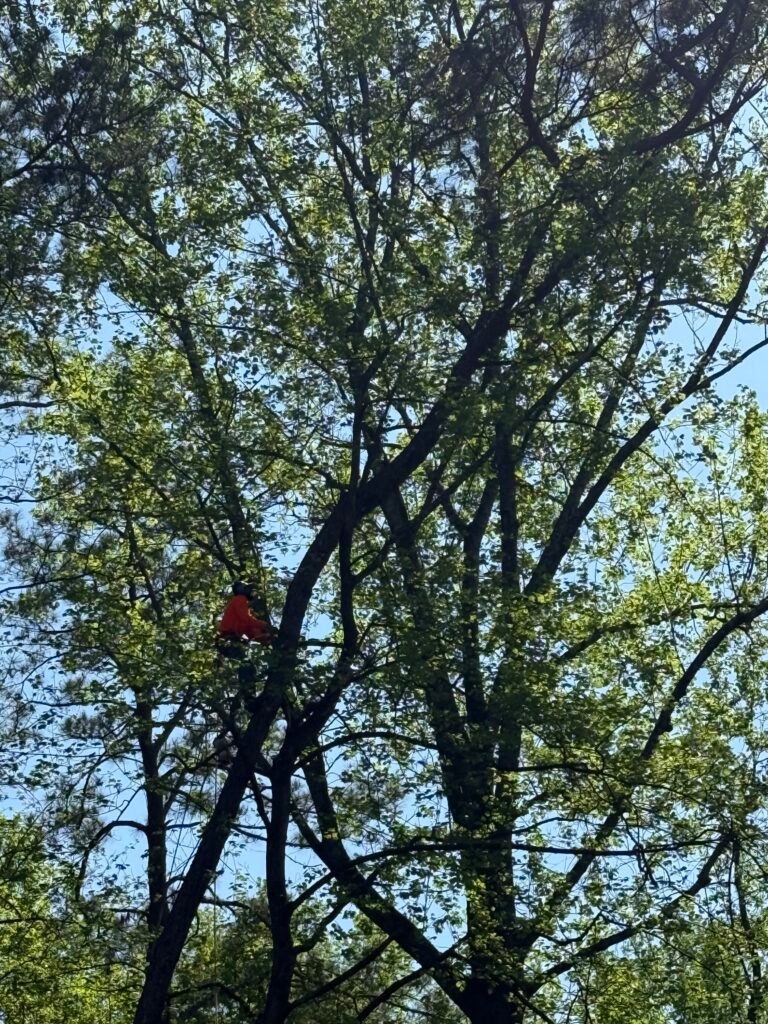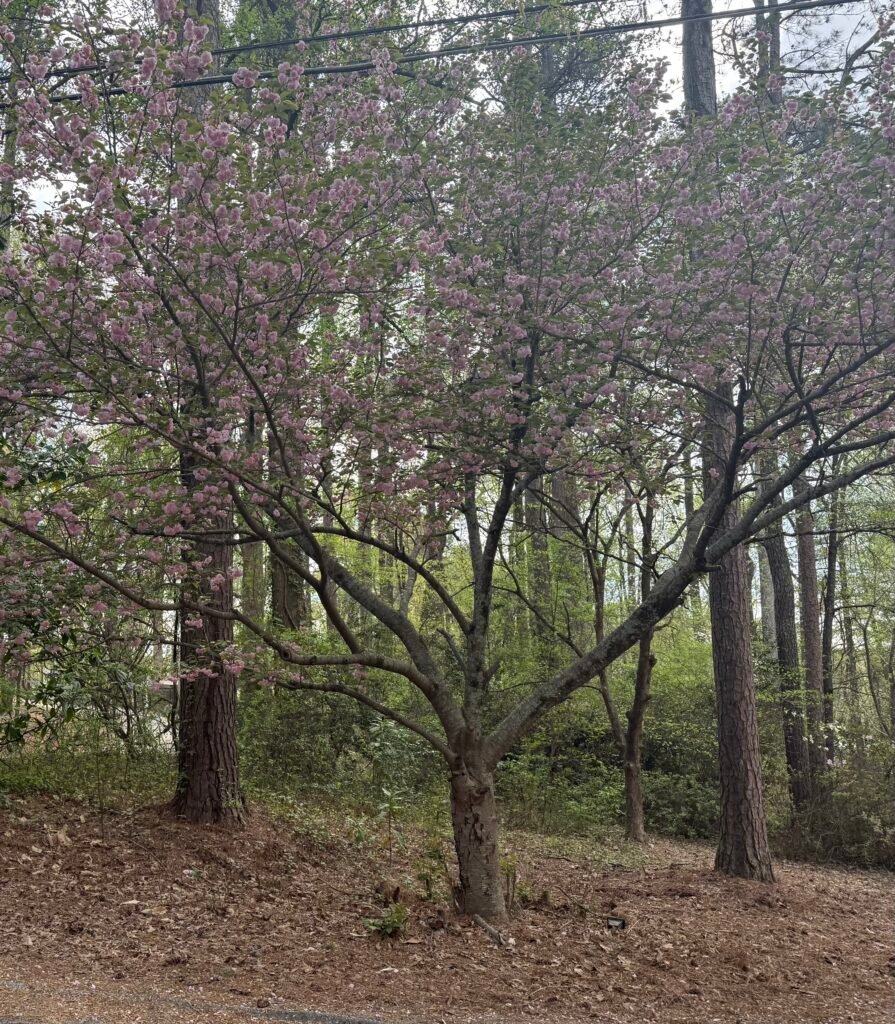Disclaimer
While homeowners can perform basic tree health assessments to identify visible concerns, a professional evaluation is always recommended for accurate risk assessment. Understanding tree health requires expertise, and it’s essential to consider how much risk you are comfortable having on your property.
Assessing Tree Health & Structural Risks
Leaning Trees
Some leaning trees may be stable, while others pose significant risk. Understanding the cause of the lean is key.

- Evaluate risk based on location and surrounding targets
- Check for soil mounding or exposed roots
- Determine if the lean has changed over time
Consult an Arborist: A certified arborist can determine whether the tree should be removed or if pruning can reduce weight imbalances.
Storm-Damaged Trees
Setting Priorities After a Storm
Emergency Action: If a tree or limb is near power lines or causing an immediate threat to safety, contact emergency responders or the power company right away.
- Immediate hazards: Trees leaning dangerously, uprooted, or with broken limbs near structures power lines require emergency attention
- Moderate risk: Trees with some broken limbs but still structurally sound
- Low risk: Minor damage that can be pruned over time
Trees that can Recover
Assessing Recovery Potential
Not all storm-damaged trees need to be removed. With proper care, some can recover and continue to thrive.

- Trees with minor damage to limbs or smaller branches may have the ability to recover if properly pruned and monitored.
- Trees that have a strong, undamaged root system and healthy bark have a better chance of survival.
- If the trunk remains intact and the damage is mostly to the crown or limbs, recovery is possible with the right care.
Action Steps for Recovery
Helping a storm-damaged tree recover requires proper care and attention.
- Prune damaged limbs to reduce stress on the tree
- Monitor the tree for signs of new growth
- Provide support for leaning trees if necessary, and stake them in place to encourage upright growth
- Regular watering and mulching to help the tree regain strength
- Follow up with a certified arborist to evaluate recovery and ensure the tree’s long-term health
Storm Debris Clean up
Who Should Handle Cleanup?
Storm-damaged trees can pose serious risks, and cleanup should be handled by the right professionals.
- Call emergency responders for trees entangled in power lines or posing immediate dangers.
- Professional arborists should handle large fallen trees, leaning trees, and high-risk pruning
- Homeowners may be able to remove small debris safely, but there is still a risk of injury from unstable branches or hidden hazards.
Source: This information is adapted from FOR 117, part of the Urban Forest Hurricane Recovery Program by the University of Florida’s School of Forest Resources and Conservation, Institute of Food and Agricultural Sciences (IFAS), published in January 2007.
